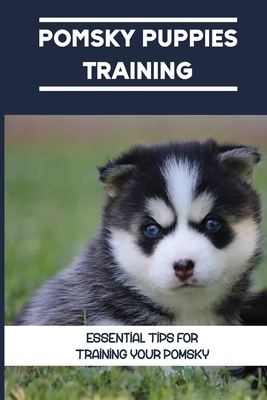Pomskies typically live between 13 and 15 years. This lifespan is influenced by their health and care.
Pomskies, a crossbreed between Pomeranians and Siberian Huskies, are known for their adorable appearance and friendly nature. With a life expectancy ranging from 13 to 15 years, these energetic and affectionate dogs make for excellent companions that can be part of your family for a considerable time.
Their health and longevity depend largely on genetics, diet, and the level of care they receive. As designer dogs, Pomskies inherit traits from both of their parent breeds, which include their vibrant personalities and distinctive looks. Prospective owners should invest time in understanding how to provide the best care for these dogs, ensuring a life full of happiness and vitality for their furry friend. Keeping them healthy with regular check-ups, proper nutrition, and adequate exercise is key to maximizing their life expectancy.
Credit: www.quora.com
Introduction To The Pomsky Breed
Have you ever seen a Pomsky and wondered about its heritage? This breed is a designer hybrid and has recently gained fame among dog lovers. Their lifespan may intrigue you. Delve into the world of Pomskies and learn what makes them so special. Discover their origins, appeal, and unique physical traits that contribute to their overall health and lifespan.
Origins And Appeal
The Pomsky comes from a blend of two well-loved breeds: the Pomeranian and the Siberian Husky. Known for their spunky and playful nature, these dogs capture hearts with their wolf-like looks and small, manageable size. They are perfect for families and individuals who desire a Husky’s appearance but need a smaller, more apartment-friendly pet.
- Pomeranian: A tiny, fluffy breed known for its vivacious personality.
- Siberian Husky: A larger, wolf-like breed celebrated for its friendly and resilient nature.
Physical Characteristics
Pomskies are admired for their adorable appearance, which is a harmonious mix of their parent breeds. They have dense, fluffy coats that require regular grooming. Often, their coat colors and patterns resemble the Husky. Their bright, curious eyes can be brown, blue, or even one of each color.
| Feature | Description |
|---|---|
| Size | Small to medium, often between 10 to 15 inches in height. |
| Weight | Usually ranges from 20 to 30 pounds. |
| Coat | Dense, fluffy, and can have a variety of colors and patterns. |
| Eyes | May be brown, blue, or heterochromatic. |
Their size often dictates their need for exercise and living space, factors that can influence their lifespan. Keeping Pomskies in an environment that caters to their physical needs helps ensure a long and healthy life. We shall explore the factors that impact the lifespan of a Pomsky and how you can contribute to your furry friend’s wellbeing.
Factors Influencing Pomsky Lifespan
When we dive into the enchanting eyes of a Pomsky, we often wonder how long this bundle of joy will grace our lives. The Pomsky, a cross between the fluffy Pomeranian and the stately Siberian Husky, boasts a lifespan that can be influenced by several key factors. It’s vital for Pomsky pet parents to understand these elements to potentially extend the life of their furry friend.
Genetics And Health
Genetics play a pivotal role in a Pomsky’s life expectancy. Inherited health conditions from either parent breed can impact longevity. Here’s what to watch for:
- Heart Conditions: Canines may inherit heart problems that affect lifespan.
- Eye Issues: Both parent breeds are prone to eye conditions.
- Hip Dysplasia: This joint problem is common in Huskies and may affect Pomskies.
Regular vet check-ups ensure early detection and treatment of health issues.
Environment And Lifestyle
A nurturing environment and active lifestyle can greatly extend a Pomsky’s life. Consider these aspects:
- Safe Living Space: Secure areas at home prevent injuries.
- Exercise: Daily activities keep Pomskies fit and healthy.
- Socialization: Interaction with humans and pets boosts mental health.
Creating a loving home environment reduces stress and promotes wellbeing.
Diet And Nutrition
Proper diet and nutrition are vital for a Pomsky’s life journey. A balanced diet includes:
| Nutrients | Benefits |
|---|---|
| Proteins | Supports growth and muscle maintenance |
| Fats | Provides energy and maintains healthy skin |
| Carbohydrates | Offers energy and fiber for digestion |
| Vitamins and Minerals | Crucial for immune function and bone health |
Consulting a vet for a tailored diet plan ensures optimal nutrition for your Pomsky.
Average Lifespan Of A Pomsky
The Pomsky, a fluffy bundle of joy, has a lifespan that intrigues many pet lovers. This mix between a Pomeranian and a Siberian Husky generally lives between 13 and 15 years. Lifestyle, diet, and healthcare contribute to their longevity. Pomsky owners cherish every moment with their canine companions, knowing they have ample time to create lasting memories.
Comparative Lifespans With Parent Breeds
Pomskies share traits with their parent breeds, which influences their lifespan. Let’s see how they compare:
- Pomeranians: Typically live 12-16 years
- Siberian Huskies: Usually around 12-14 years
A Pomsky’s lifespan falls right within the range of its parent breeds. This suggests genetics plays a key role in their overall life expectancy.
Variability In Lifespan
Not all Pomskies will live the same amount of years. Different factors can affect their lifespan:
- Genetic health issues
- Quality of care and diet
- Exercise and activity level
To ensure the longest life for your Pomsky, focus on good nutrition, regular vet visits, and plenty of exercise. Each Pomsky is unique, and so is their health journey.

Credit: www.petguide.com
Extending Your Pomsky’s Life
Owners often ask “how long do Pomsky dogs live?” The Pomsky, a fluffy bundle of joy, is a designer dog breed that captures hearts with its husky-like markings and smaller, more manageable size. With proper care, these energetic and lovable pups can enjoy a lifespan of 13-15 years. But what does it take to help them thrive for as long as possible? Let’s explore some key strategies to extend your Pomsky’s life.
Preventative Healthcare
Regular vet visits matter. Early detection of issues can lead to longer, healthier lives for Pomskies. Vaccinations, parasite control, and dental care are pillars of preventative health. Keep your pet up-to-date with their shots and checkups.
- Annual health screenings: Catch problems before they grow.
- Spay/neuter: Prevents certain health risks and unwanted litters.
- Healthy diet: Balanced nutrition is key for a strong body.
Regular Exercise And Activity
Pomskies are energetic and need daily exercise to maintain fitness. This crossbreed benefits significantly from physical activities like walking, running, or playing fetch. Exercise helps prevent obesity, which can lead to health problems and a shorter lifespan.
Exercise ideas:
| Type | Activity | Duration |
|---|---|---|
| Indoor | Tug of war | 15 minutes |
| Outdoor | Hiking | 30+ minutes |
| Intellectual | Puzzle toys | Variable |
Balance these activities to keep your Pomsky in top shape.
Mental Stimulation And Emotional Well-being
A stimulated mind makes a happy dog. Pomskies possess a keen intelligence that demands engagement. Interactive play, training sessions, and toys that challenge them mentally can prevent boredom and stress.
- Teach new tricks to engage their brain.
- Provide puzzle toys to solve.
- Offer quality time and affection daily.
Emotional connections also impact longevity. A loved Pomsky is a healthy Pomsky.
Recognizing And Managing Age-related Issues
As Pomsky owners, it’s vital to understand how to recognize and manage any age-related issues that may arise. These delightful furry friends typically enjoy a lifespan of 13 to 15 years. Knowing the common health problems they might encounter as they advance in age is crucial for maintaining their quality of life.
Common Health Problems In Older Pomskies
Older Pomskies may face several health challenges as they age. Pay attention to signs of these common concerns:
- Dental issues – Regular dental care prevents tooth decay and gum disease.
- Joint problems – Arthritis can cause discomfort; supplements and medication help.
- Vision loss – Regular checks catch early signs of cataracts or blindness.
- Weight management – A balanced diet and exercise control weight gain.
Monitoring for these signs allows for earlier intervention and a better outcome.
Veterinary Care And Regular Check-ups
Regular veterinary visits are paramount for older Pomskies. Experts recommend biannual check-ups to detect issues promptly. A routine might include:
- Blood tests – Identify concerns like diabetes or kidney disease early on.
- Physical exams – Ensure overall health, check heart and joints.
- Vaccinations – Continue even in older age to prevent common diseases.
Remember, consistent vet care extends your Pomsky’s healthy years. Begin these practices early for a lifetime of benefits.
The Final Years
As Pomskies enter their golden years, usually around the age of 7, they move into a period of life that requires extra care and attention. This breed, a mix between a Pomeranian and a Siberian Husky, has a lifespan that averages between 12 to 15 years. Understanding and preparing for the changes that come with aging can greatly enhance a Pomsky’s quality of life during their final years.
Supporting An Aging Pomsky
Adjusting to an old Pomsky’s needs is key. Regular vet check-ups, a comfortable resting area, and appropriate exercise become more critical than ever. Older dogs often require different nutrition, and addressing joint health is essential for maintaining mobility. Owners should also watch for signs of cognitive changes and adapt their home environment to support their aging pet.
- Regular health screenings to catch early signs of age-related issues.
- Balanced nutrition focused on senior dogs’ needs.
- Gentle exercise like short walks to maintain fitness.
Quality Of Life Considerations
Measuring a senior Pomsky’s quality of life involves looking at their health and happiness. Indicators like appetite, comfort levels, and social interaction help assess well-being. Owners should be aware of any pain or discomfort and work with their vet to find solutions. Prioritize joy and comfort, ensuring your Pomsky feels loved and engaged in their favorite activities.
| Assessment Area | Actions to Take |
|---|---|
| Appetite | Monitor eating patterns and consult a vet if changes occur. |
| Comfort | Ensure a soft bed and manage any pain with vet guidance. |
| Social Behavior | Keep your Pomsky involved in family life and social activities. |

Credit: www.magersandquinn.com
Frequently Asked Questions For How Long Do Pomsky Live
What Is The Lifespan Of A Pomsky?
Pomskies typically live between 12 to 15 years. Proper care, diet, and exercise can influence their longevity positively. Genetics also plays a crucial role in their overall lifespan.
How To Improve Pomsky’s Lifespan?
Providing a balanced diet, regular vet checkups, and adequate exercise can help extend a Pomsky’s life. Also, maintaining dental hygiene and mental stimulation are essential.
Are Pomskies Prone To Health Issues?
Pomskies may inherit health problems from their Husky and Pomeranian lineage. Common issues include dental problems, luxating patella, and eye conditions. Regular health screenings are recommended.
Can Pomsky’s Lifespan Vary With Size?
Generally, smaller dog breeds tend to live longer than larger ones. However, a Pomsky’s lifespan is more influenced by its health care and genetic background than its size per se.
Conclusion
Understanding the life expectancy of a Pomsky gives potential owners a glimpse into the commitment required. On average, these furry friends grace our lives for 12 to 15 years. Maintaining their health is key—regular check-ups and proper care are essential.
Cherish every moment with your Pomsky, as each year is a gift. Embrace the journey of companionship with this lovable hybrid.

